Guide to Profiling Hospice Beds
Posted on 16 April 2024 By Michael Wood
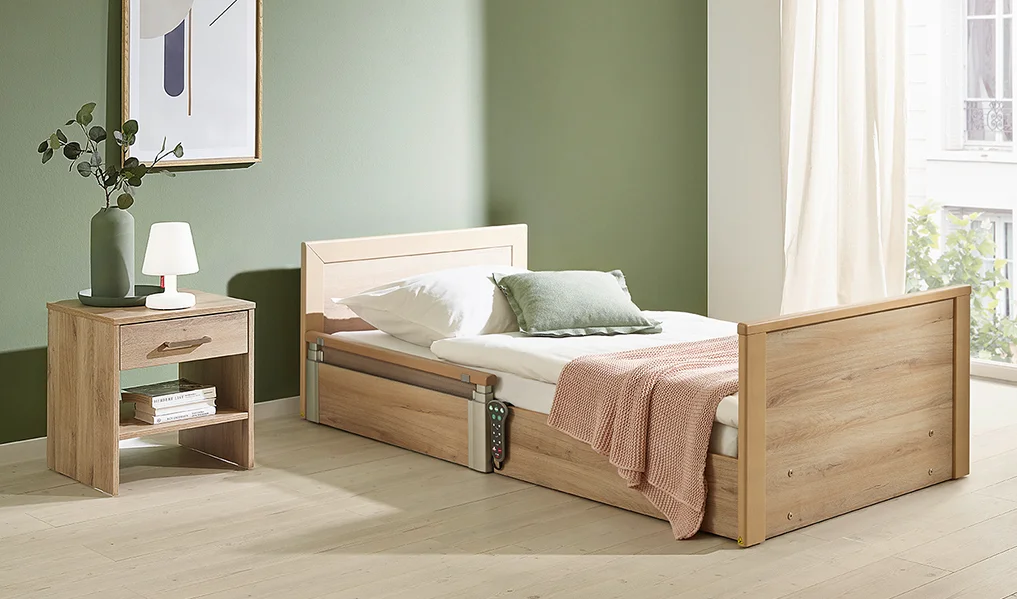
In This Article
When delivering end of life care for patients, having a profiling hospice bed that provides high levels of comfort, support…
When delivering end of life care for patients, having a profiling hospice bed that provides high levels of comfort, support and safety is imperative. Not only do they provide adjustability, both electronically or manually, to enable individuals to find a comfortable, safe sleeping or resting position, they also assist care staff with features that makes it easier to deliver care and clean the bed.
In this blog, we’ll take a look at what to look out for when choosing a hospice profiling bed, including safety features, how to increase patient comfort and how to avoid having equipment that looks clinical.
How do I know which bed is suitable for a hospice patient?
Prior to buying a profiling bed, you need to carry out a comprehensive assessment of your patient’s specific needs. This will allow you to consider factors such as any mobility limitations, pressure ulcer risk, falls risk and weight capacity requirements. It also needs to take into accounts any existing medical conditions.
By putting these specific requirements together, it will enable you to have a clearer picture of what sort of bed you need, and which appropriate features does it need to have to meet your patients needs.
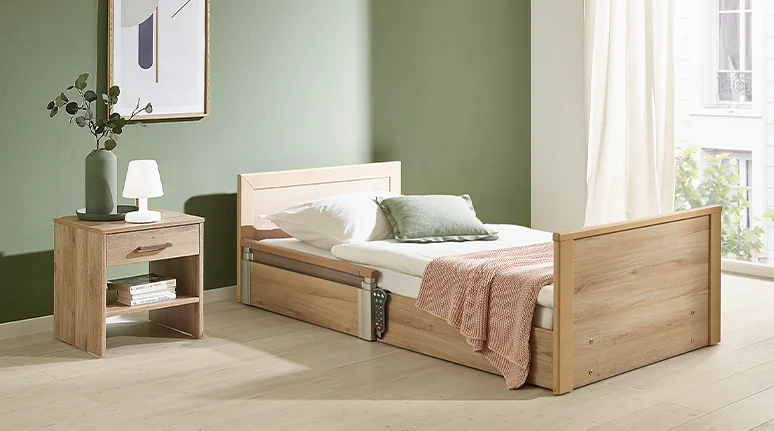
What is the purpose of hospice profiling bed?
As we know, profiling beds are electric, height adjustable beds that are predominantly used in care homes, hospices, hospitals and domestic homes. Designed to provide independence and comfort for users, they play a key role in boosting mobility whilst in bed and assisting patient transfers.
A common feature on most profiling beds with height adjustability, is the flexibility offered by the backrest, which helps postural support and improves respiratory function. Using this function, legs can be raised the legs to reduce fluid buildup and improve blood circulation. By lowering the foot section, the risk of pressure sores on heels and feet can be greatly reduced.
Another common feature to note is that many of these beds tilt. The Trendelenburg and reverse Trendelenburg positions are the most frequently used for circulatory benefits, increased lung function and pressure relief.
To get more information on the different types of hospice beds, including profiling beds, take a look at our hospice bed guide.
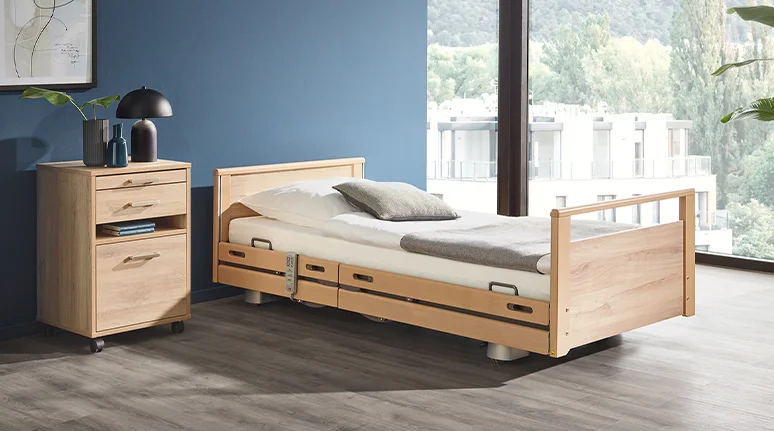
What are the safety features on a hospice profiling bed?
One of the biggest risks in a care environment, especially hospices, is patients falling out of bed. To prevent this occurrence and minimise risk, care beds and hospice profiling beds are fitted with side rails.
These safety features serve a dual purpose by preventing patients from accidentally rolling off the bed, as well as making it less hazardous when repositioning or getting in and out of bed.
Additionally, many profiling beds are designed to include adjustable height features, enabling caregivers to position the bed at an optimal level to further reduce the risk of falls during transfers. Some beds also use advanced fall detection systems, alerting caregivers when a patient attempts to leave the bed unassisted. This feature aids prompt intervention to minimise potential injuries.
Other important safety features to look out for include emergency stop buttons, anti-entrapment mechanisms and a low height option to give easier access.
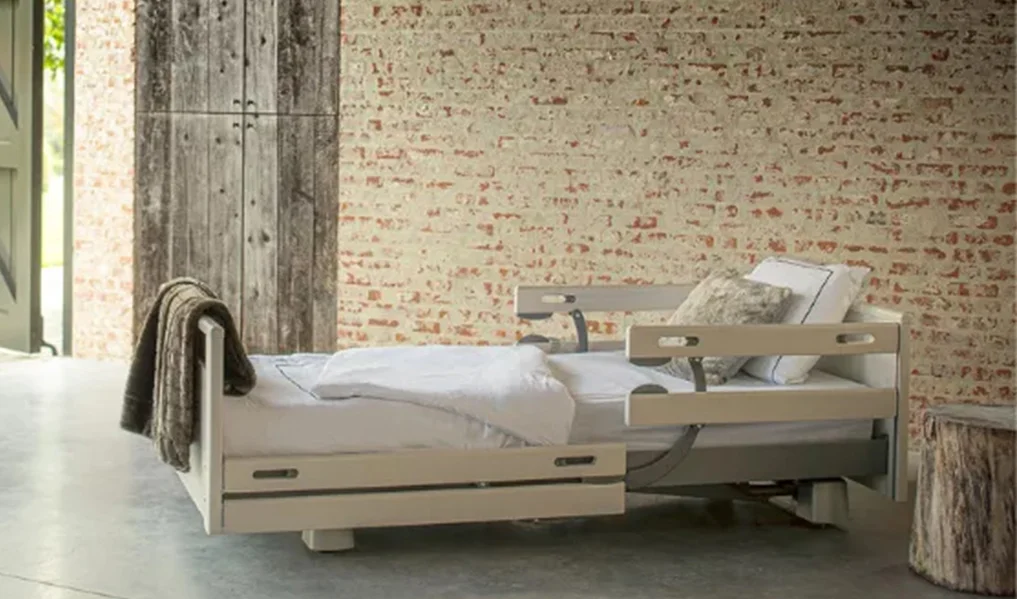
Care beds and hospice profiling beds are fitted with side rails to enhance fall prevention.
How can profiling beds help hospice staff?
Hospice staff have hectic schedules to contend with, so ensuring you have equipment that makes their job easier is essential. Simple features such as lockable castors can make a big difference, helping the process of moving a bed between rooms easier.
Height adjustability to minimise strain injuries is also another important consideration, given the stresses hospice have in maintaining adequate staff levels.
Another thing to note is durability. Hospices often rely on donations for their general running costs and to allow them to invest in new equipment. Investing in products that are built to last not only ensures value for money, it also saves time and hassle in staff having to arrange servicing calls to fix broken equipment.
When purchasing a bed, it is also pays dividends to look into the bed’s construction materials, weight capacity, and warranty. Assess a supplier’s servicing package to check that it meets your needs and budget, and that there is regular availability of spare parts.
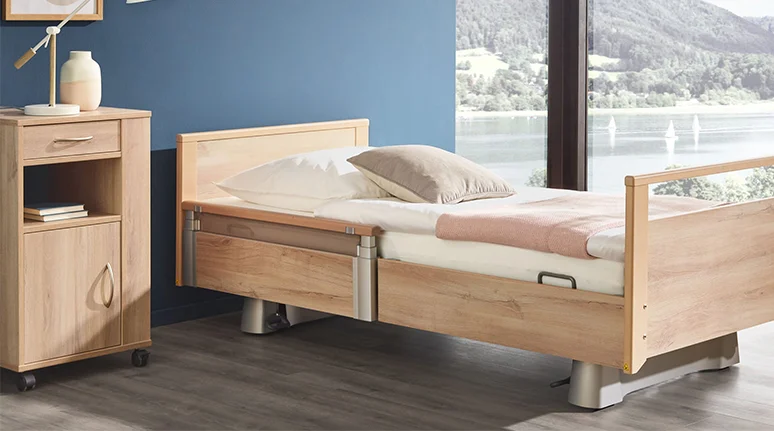
Infection prevention
Maintaining a clean and hygienic care environment is an absolute must for any hospice. Care and profiling beds in particular require a special focus on infection control, with the majority of patient care taking place whilst in bed.
To help reduce infection risks, you need to look at profiling beds with materials that are easy to clean, wipe down and disinfect. Removable and washable covers and antimicrobial coatings can all help in that regard and meet with infection control protocols.
An example of this can be seen with the Liberta profiling bed, a favourite with hospice environments. It uses a mesh fabric for its side panels due to its anti-bacterial, flame retardant properties. In addition, the panels can be easily removed for washing.
Finding a non-clinical looking profiling bed
As mentioned earlier, sturdy and robust side rails are an essential feature of a profiling bed. However, despite the protection they provide end users, they can give off a rather clinical aesthetic. Many hospices are seeking to move away from functional design and look towards equipment that is more subtle, helping create a calmer and warmer environment.
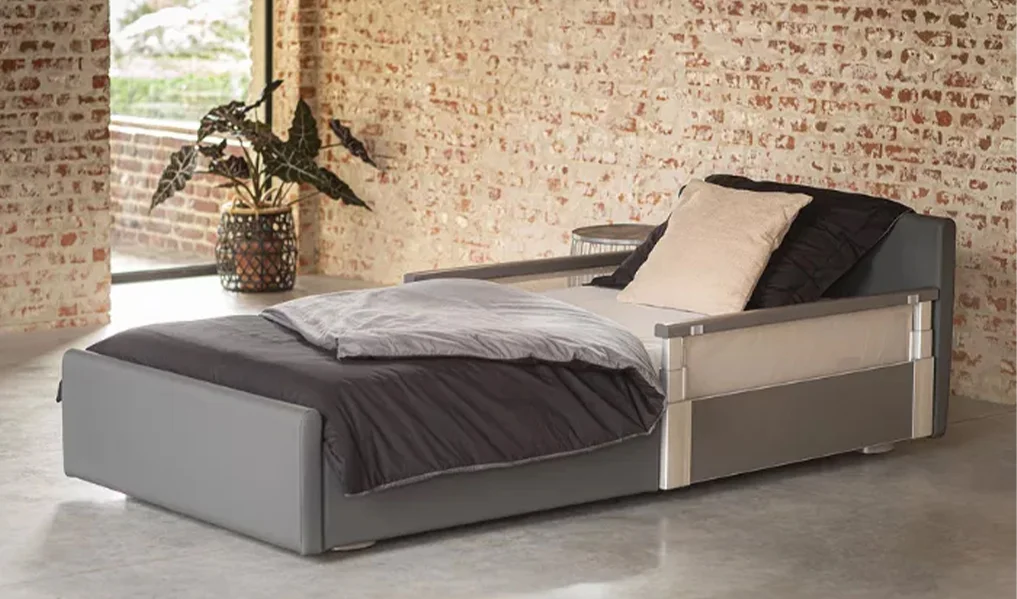
With the Formidabel bed, that need can be achieved thanks to interchangeable sidepanels that can be switched from a sliding fabric courtesy panel to a wooden panel – or vice versa – in just 30 seconds. By simply pulling up the bed guard rails when they’re needed or sliding them down when they’re not necessary, this profiling bed can offer both the functionality and style that hospices are looking for.
Able to be stopped at any height, these unique siderails give individuals a range of options. They’re even strong enough to use as a handle to get out of bed! To help beds blend into an existing environment, the Liberta offers great flexibility in terms of customisation, with a standard range of 12 finishes, as well as both wood and fabric finishes on offer for the side panels and bed ends.
Summary
Choosing the right hospice profiling bed is a tough, but pivotal decision for managers and CEOs who are committed to providing optimal care. Amongst the factors to consider are the safety and comfort of patients, as well as support for caregivers.
By taking time to investigate and research these areas, hospices are able to not only get a clearer idea of which profiling beds are most suited to their patient’s needs, they also gain a better understanding of which products will help enhance their overall care delivery.
Investing in the right profiling beds ensure value for money, but more importantly, support the creation of a calming care environment that benefits patients in their final stages of life.
Need advice to help you find what you are looking for? Complete the form below to book an appointment with one of our specialists today.
Related Products
Speak to The Experts
Need assistance with product enquiries, general inquiries, or product support? Our Phonelines are open 9am - 5pm Monday to Friday
0113 519 0319
Or, fill out the form for a call back.

